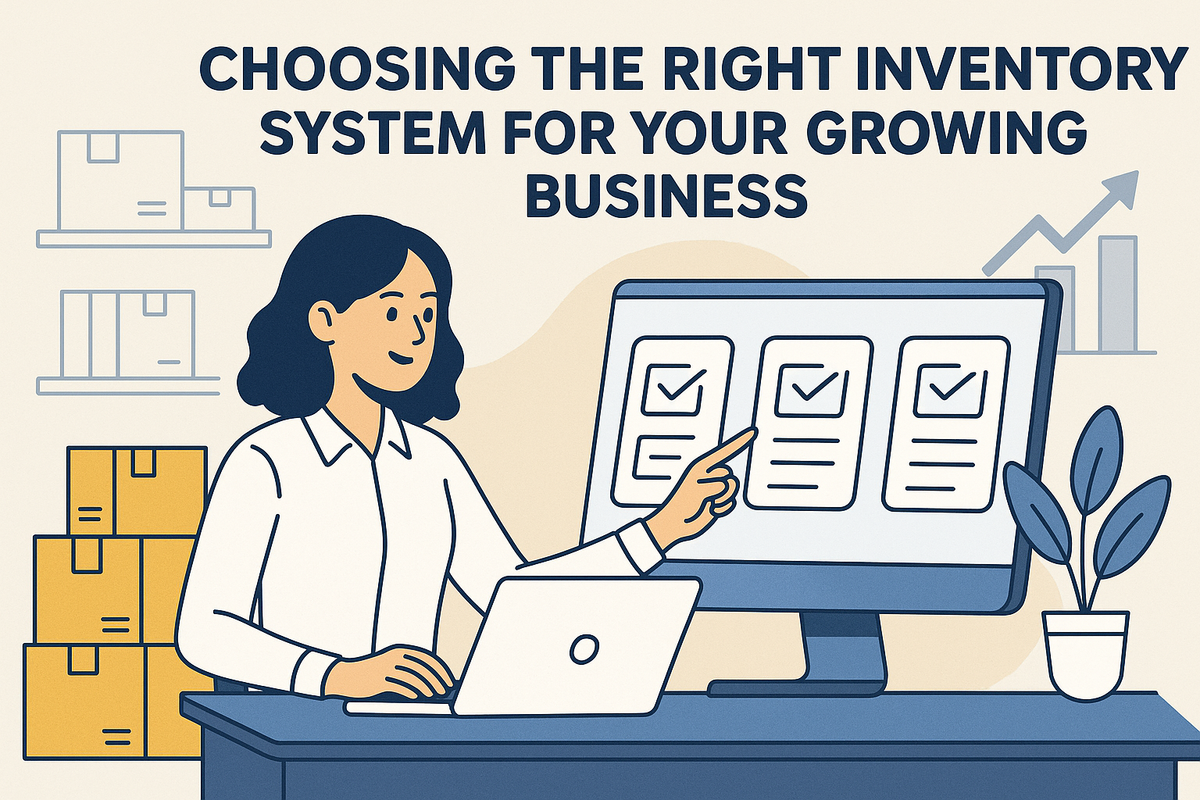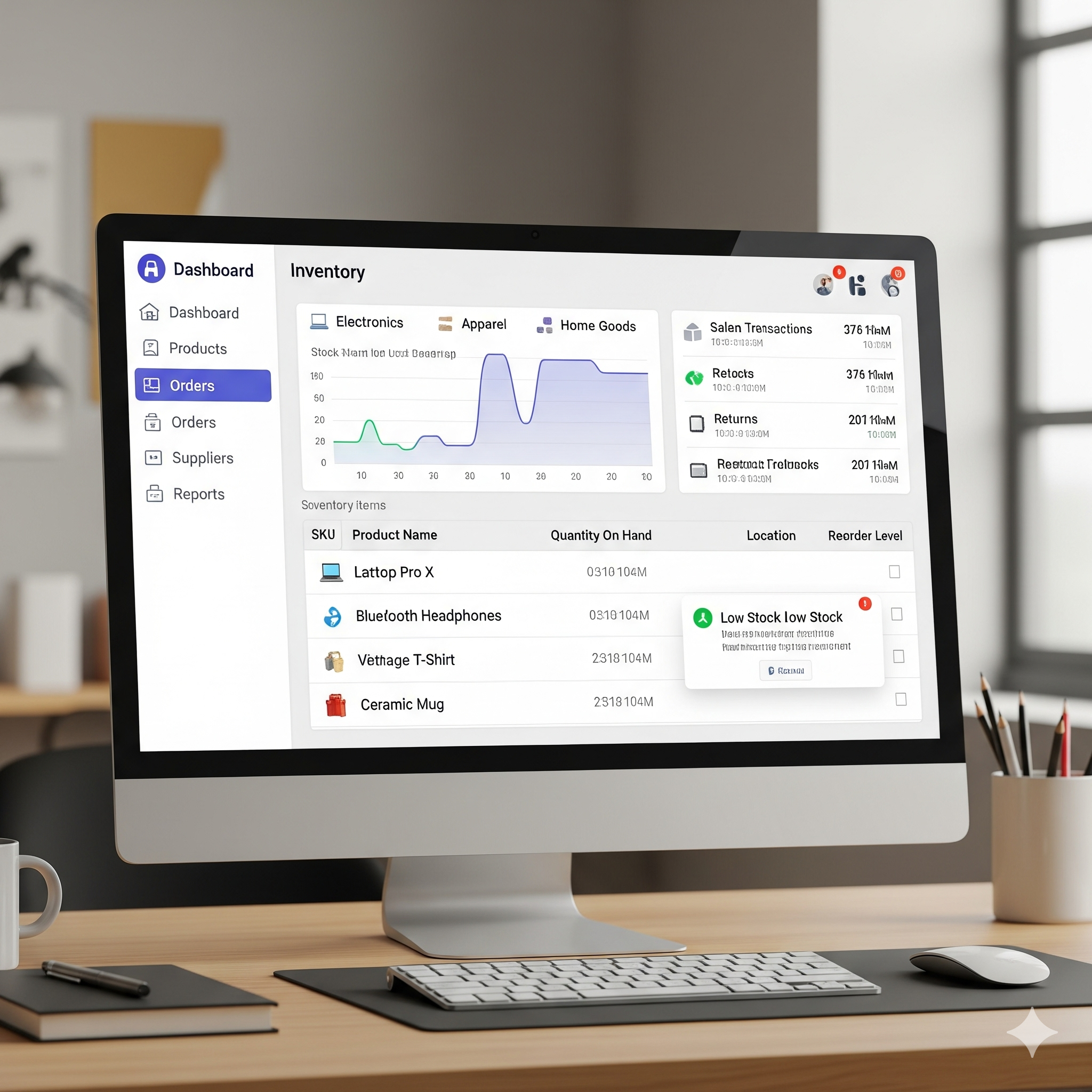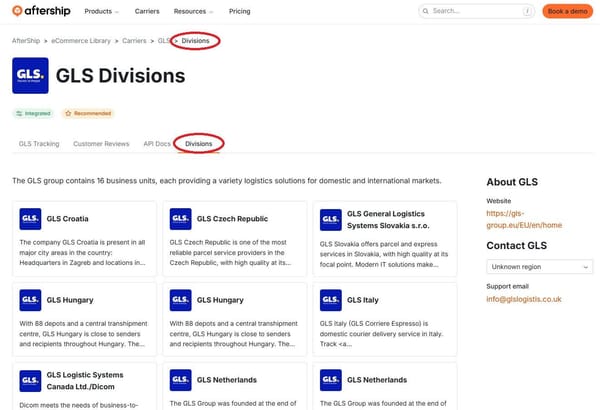Choosing the right inventory system for your growing business

Accurate inventory information underpins every operational decision a business makes. Whether your business is in e‑commerce, manufacturing, distribution or a simple brick‑and‑mortar store, you need a reliable way to record and store purchases, sales and stock levels.
There are numerous ways to do this – from manually updated spreadsheets to sophisticated warehouse‑management software – and the best option depends on the size of your business, its growth stage, operational complexity and how much visibility you need across your supply chain.
This article compares three common approaches – spreadsheets, Lecxa and Unleashed – and explains when each is most suitable.
When Spreadsheets are Enough
For very small businesses (less than about AU\$1 million in annual revenue and a handful of staff), basic spreadsheets can be an effective way to track stock.
Sheets in Microsoft Excel or Google Sheets are free, flexible and familiar. A recent article from Sage notes that spreadsheets are still used in many small businesses because they make large amounts of data easier to view and analyse, allow visual charts to be created and automate repetitive calculations via formulas[1]. For simple product catalogues, a well‑designed sheet can be customised to calculate real costs, identify top‑selling items and streamline basic warehousing processes.
However, spreadsheets quickly show their limitations as businesses grow. Studies cited by Sage show that up to 88 % of spreadsheets contain errors[2], and 35 % of companies report discrepancies in their most important spreadsheets[3].
Spreadsheets are hard to scale: complex formulas require training and are error‑prone; errors in a single cell can propagate through the whole sheet[4]; collaborating on files often leads to conflicting versions[5]; and there is no real‑time view of inventory movements[6]. Manual data entry is time‑consuming, there are no controls over user access, and it is difficult to track stock across multiple locations or warehouses[5]. Spreadsheets stored on local computers are also at risk of file corruption or hardware failure[5].

When they’re best: If you have only a few SKUs, stock is stored in one location and you don’t need real‑time insight, spreadsheets can provide a cheap and customisable solution. But once orders increase or you need multi‑user access and integrations with other systems, moving to a dedicated tool is essential.
Lecxa
Frictionless Inventory/Warehouse Management
Lecxa is an Australian‑built inventory/warehouse‑management system (WMS) designed as a next step up from spreadsheets. Its name is an almost‑backwards spelling of “Excel.”
The company says its goal is to give small businesses “the most efficient warehousing processes possible”[7]. Key principles include:
- Agility & Simplicity: The interface is intuitive and designed so that anyone can use it; workflows are kept as frictionless as possible[7].
- Scalability: Lecxa can handle emerging companies and help them “transform into large enterprises”[7].
- Integration & On‑boarding: The FAQ section states that the Lecxa team will scope a customer’s existing ERP and platforms and provide a timeline with key milestones for integration. If the business uses a platform the company already connects to, it can be a quick, free and seamless integration[8].
Core Features
The features page breaks the system down into inbound, inventory and outbound modules:
- Inbound stock: Purchase‑order creation, warehouse receiving and an intuitive bill‑of‑materials (BOM) ordering interface[9].
- Inventory management: Detailed, customisable location mapping (for shelves, bays, bins, etc.), reorder quantities and simple stock allocation/adjustment[9].
- Outbound stock: Sales‑order allocation, back‑order automation and a simplified pick‑and‑pack process[9].
- Integrations & API: Built‑in connectors for Shopify and Xero and API access for custom integrations[9].
- AI‑powered importing: Users can drag CSV files anywhere to import data and trigger quick‑action tasks[9].
Lecxa offers a 90‑day free trial and several subscription tiers.
The Starter plan costs about AU\$47 per month and includes up to 25 products, 2 locations and 1 user[10]. The Basic plan is AU\$118 per month and expands capacity to 50 products, 10 locations and 2 users[11].
The Core plan is AU\$489 per month and supports unlimited products and locations, live reporting/analytics and 5 users[11].
An Advanced tier is available on request for businesses requiring bespoke features and priority support[11].
Who is Lecxa for?
The platform’s FAQ lists businesses for which it is ideal: companies that currently use spreadsheets, have between 10 and 1 000+ SKUs, need to track stock by shelves, bays and bins, and either use or plan to use barcode scanning[12].
Lecxa is described as a cost‑effective WMS particularly suited to small‑ to medium‑sized retailers, e‑commerce businesses, wholesale distributors and manufacturing companies[12]. It is intended for growing businesses that need scalable inventory solutions[12].
Pros & Cons
Pros
- Affordable for small businesses: With a free trial and plans starting under AU\$50/month, Lecxa is inexpensive compared to enterprise systems[10].
- Simple to use: The interface emphasises simplicity, making it easy for staff with no technical training[7].
- Granular location mapping: Users can assign SKUs to specific shelves, bays or bins and set reorder levels[9].
- Native e‑commerce/accounting integrations: Built‑in connectors for Shopify and Xero mean inventory and orders can sync automatically[9].
Cons
- Early access: Lecxa is still in early access (beta) with features under development. Users may need to work closely with the team to configure workflows and integrations.
- Limited integrations today: The current integrations list is short (Shopify and Xero), so businesses using other channels or ERPs may require custom API work[8].
- Scalability beyond mid‑size is unproven: While the company advertises scalability, there are few user reviews yet; businesses with complex manufacturing may require a more mature system.
Unleashed - Inventory / Manufacturing Management System
What Unleashed Does
Unleashed Software is a cloud‑based platform designed for businesses that have outgrown spreadsheets. According to user reviews aggregated on Capterra (between July 2014 and June 2024), Unleashed provides comprehensive inventory management capabilities that allow users to manage stock levels, take orders and generate quotes efficiently[13]. Reviewers note that integration with Xero simplifies accounting processes and enhances operational efficiency[13]. The software can track both finished products and raw materials, giving businesses a complete overview of their inventory life cycle[13]. Unlike basic inventory tools, Unleashed includes manufacturing‑specific features such as bill‑of‑materials (BOM) management, batch/lot tracking and disassembly of returned products (so components can be returned to raw stock). These capabilities make it popular with breweries, bakeries and food manufacturers.
Unleashed is also noted for its unlimited‑warehouse support. Even on introductory plans, businesses can manage an unlimited number of warehouses and locations, which can save thousands of dollars compared with systems that charge per warehouse[14]. The system offers a robust API and integrates with e‑commerce platforms (Shopify, Amazon, WooCommerce), accounting software (Xero, QuickBooks Online) and CRM solutions. Mobile apps allow sales staff to access stock and create orders on the go.
Pricing
Unleashed’s pricing is higher than lightweight solutions because all plans include premium features. Capterra lists a medium plan starting around AU\$380 per user per month and a large plan around AU\$710 per user per month (with increased API call limits, reporting capabilities and more users)[15]. There is also a large plus tier (~AU\$1 080) with additional API calls and enterprise features[15]. This pricing model allows businesses to scale up to many users and warehouses, but it can be expensive for very small companies. User comments indicate that Unleashed’s pricing structure offers good value for money given its power and functionality, although some reviewers find it expensive compared with alternatives and note that price increases can be frustrating[16].
Pros and Cons
Pros
- Comprehensive feature set: Unleashed combines inventory, manufacturing, purchasing and sales modules. Users praise its ability to handle complex assemblies, track raw materials and finished goods, and generate accurate profit and margin reports[13]. The unlimited‑warehouse capability is valuable for businesses operating multiple locations[14].
- Deep integrations: It integrates with accounting platforms (Xero, QuickBooks), e‑commerce sites (Shopify, Amazon, WooCommerce), bar‑coding systems and other business tools[13].
- Strong support team: Reviewers consistently highlight the responsiveness and problem‑solving skills of Unleashed’s support staff[13].
- Real‑time visibility & reporting: Users appreciate the clean dashboard and the mobile app that allows them to manage orders and stock remotely[17].
Cons
- Steep learning curve: Because it is a fully fledged ERP‑like system, Unleashed can be difficult to learn. Businesses may need dedicated training to set up workflows and ensure data accuracy[14].
- Higher cost: With pricing starting around AU\$380 per user per month, Unleashed can be expensive for small businesses or those with many users[16]. Some users also report dissatisfaction with periodic price increases[16].
- Complexity may be overkill: For firms with simple needs or fewer SKUs, the breadth of features can feel overwhelming and unnecessary.
Which System is Right for you?
Selecting the right inventory system requires assessing your business’s complexity, size and growth trajectory. The table below summarises key considerations:
Which inventory system is right for you?
🛒 Few SKUs, single location, low order volume
Use: Spreadsheets (Excel / Google Sheets)
Why: Free or very low cost, easy to customise, widely understood. Great for simple storage and quick reports.
Read more ›
📦 Growing business (10–1,000+ SKUs, multiple bins/shelves)
Use: Lecxa
Why: Adds purchase-order management, detailed location mapping, reorder alerts, and integrations with Shopify/Xero. Affordable plans starting from AU$47/month.
Features › | Pricing ›
🏭 Manufacturing or distribution (multi-warehouse, complex assemblies)
Use: Unleashed
Why: Full stock, production, and sales features. Unlimited warehouses, batch tracking, BOM, advanced reporting, plus integrations with accounting and e-commerce platforms.
Review › | Capterra ›
Final Thoughts
Information is the lifeblood of any business. While spreadsheets are flexible and low‑cost, they lack the audit trails, real‑time updates and scalability that growing companies need.
Tools like Lecxa bridge the gap by providing intuitive warehouse‑management features and integrations at small‑business pricing.
Established platforms such as Unleashed offer enterprise‑grade capabilities for businesses that need deep manufacturing functionality and multiple warehouse management. Consider your current processes, growth plans and budget when deciding – and remember that the right system should give you accurate, timely data so you can make better decisions.
[1] [2] [3] [4] [5] [6] Advantages and disadvantages of using spreadsheets for your business | Sage Advice UK
https://www.sage.com/en-gb/blog/speed-up-business-processes/
[7] [8] [12] Lecxa - Simplified Warehouse Management
[9] Features | Lecxa
https://www.lecxa.com.au/features/
https://www.lecxa.com.au/pricing/
[13] [15] [16] [17] Unleashed Pricing, Alternatives & More 2025 | Capterra
https://www.capterra.com/p/126644/Unleashed/%23toc-pros-and-cons
[14] Unleashed Inventory Review 2025 | Business.org
https://www.business.org/finance/inventory-management/unleashed-inventory-review/




